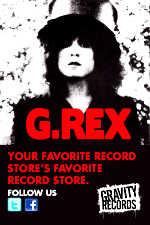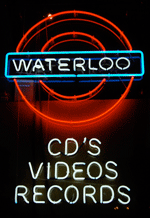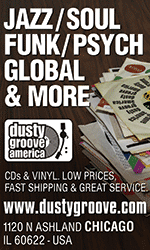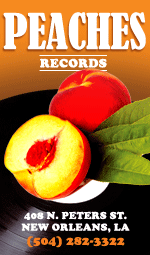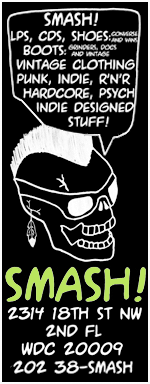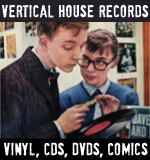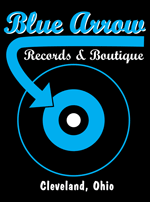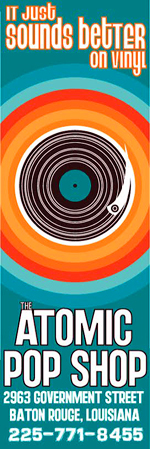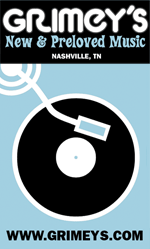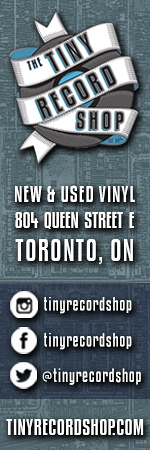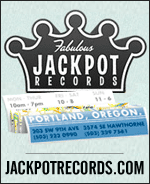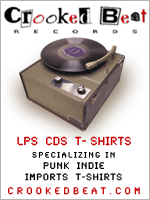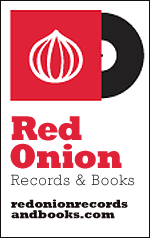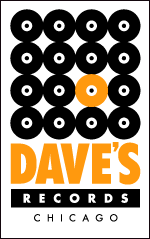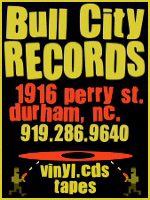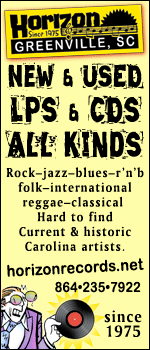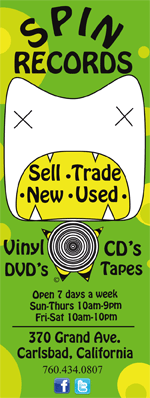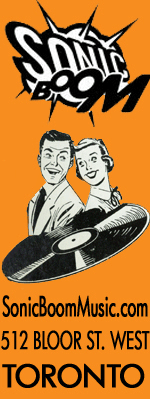PHOTOS: ELENA HIBBS | “There you go, yeah!” That exclamation, spoken frequently by The Flaming Lips’ leader Wayne Coyne, encapsulates his exuberant approach to life. Since forming the band in Norman, Oklahoma in 1983, Coyne has followed his muse down many, sometimes challenging paths, never taking the one most traveled. Along the way, he has become an accidental pop star, heir to the music of psychedelic forbears like Thirteenth Floor Elevators and Syd Barrett, and one of the most engaging frontmen in rock. That he does it all with a zeal akin to a teenager hearing his first life-changing album is not only exciting, it’s inspiring.
We spoke with Coyne prior to the band’s appearance at Louisville, Kentucky’s Forecastle Festival. In the freewheeling conversation that followed, Coyne spoke about the band’s current album, how images inspire their writing process, and their early days playing in Oklahoma, Dallas, and other regional venues. Oh, and he talked about blood. Yes, there will be blood. Read on.
When I look at the cover of your latest album The Terror, I get a real 1971 vibe.
Well, that’s because you were alive in 1971! (laughs) I liked John Lennon’s first album with the Plastic Ono Band, the one where they’re sitting under the tree. When you listen to it, it’s not a peaceful record; it has considerable inner turmoil. When you know the music and then look at the cover, it’s quite a juxtaposition. If you didn’t know the music, you’d think, “Oh, look at them, they’re getting stoned under a tree.” But it never hit me like that.
That element stuck with me. One day, I was walking through the park and I saw a kid sitting there (as pictured on cover of The Terror), and I thought it was a cool image. The more I looked at it, I realized, “Yeah, there’s something about it…” At the same time, we had already written one of the album’s tracks, “You Are Alone,” which is probably the most devastating track on there. The idea of this kid sitting there, alone, came together with the song for me. Once we decided that would be the album cover, I think we kept creating music that would make that idea happen. Like, if you saw that and heard this, it would take you into another dimension.
So, that photo was the catalyst for much of what you wrote for the album?
Yes, often, it’s like that for me. It helps me get a sense of what the music can be about. Once we get a little bit of a theme, we can run with it. Like with The Soft Bulletin, we knew from the beginning “That’s the [cover] image,” and we wrote the record around it. However, for Yoshimi Battles The Pink Robots, we didn’t know what the fuck we were going to do. But we were making a lot of music, and about three-quarters of the way through it, I came up with the idea of Yoshimi versus the robots. I actually drew it out, almost the way it looks now.
So, now that we knew the title and we knew the theme, we wrote more songs. In fact, some of the best songs came after we had the cover and the title. It can really give you a sense of what the record’s going to be. I think whatever it takes to extract the music from your subconscious, that’s what you need to do. Sometimes, the image tells you not so much what to do, but what not to do.
That’s the same process filmmaker Roger Corman used. He would come up with a title, have an artist create the poster and then tell the director, “Go make this movie!”
Yeah, there’s a sense of that. The music can be about anything. The images can tell you so much. Then again, sometimes it’s just dumb luck. Nowadays, many people don’t even see the album cover. They’re just downloading tracks onto their computers and missing that element.
When I said The Terror’s cover evoked images of 1971, I was really envisioning that era’s end-of-the-world films like The Omega Man and Soylent Green.
It did that for me as well. There are dystopian themes, for sure. Steve [Drozd] and I both talked about how it felt like a religious cult from the future, sending a message back: “Change what you’re doing because it’s not working. Do it now while you have the time. A warning from the future!” (laughs)
Ed: On Record Store Day 2012, The Flaming Lips released a double LP titled The Flaming Lips and Heady Fwends. As the title suggests, the album is a collection of collaborations with some of their musical contemporaries, including Nick Cave, Jim James, Yoko Ono, Chris Martin, Ke$ha, Erykah Badu, and many more. During the making of the record, Coyne was inspired to create a special limited edition of the album with the combined blood of the contributors contained within the vinyl. He set about collecting samples from the musicians and turned to Nashville’s United Record Pressing to make his dream a reality.
Regarding the special edition of The Flaming Lips and Heady Fwends, Jay Millar of United Record Pressing, at whose kitchen table you assembled them, says that one of the records is starting to coagulate…
(Laughs) Well, it took me a while to collect the blood, and some of it wouldn’t have been refrigerated [in transit], so when I got it, some of it was already blackish. But I gathered a bunch of it just before we went to Nashville [for the assembly], so there was fresh blood in there, too. We souped it all together so that each record would have an even mix and not, say, one record of all Yoko Ono and one of Jim James. We wanted them all to be mixture of everyone’s stuff. Who would do that?!
What was the inspiration for the limited edition?
It was based in this idea that KISS once had a comic book printed with their blood mixed in the ink. When you think about it, there couldn’t have been much blood in any individual copy, if any. Perhaps, when you’re younger and more naive, you might have believed it, but later on, you think, “How true could that be?”
Since we were making the record ourselves, I initially thought we would put the blood in with the vinyl, dripping it in with the vinyl pellets. Then someone told me that Jack White had done a liquid-filled record. When I was in Nashville, recording with Ke$ha, I went by URP, and they showed me how it worked. I asked if we could do the same thing, but with blood, and they said, “Sure!”
I had heard that some of Jack’s liquid-filled records had leaked, so I did double sealing on our copies. The blood is in a plexiglass container inside the clear record to avoid leaking. Pretty crazy! We were only able to do that because we weren’t on Warner Brothers for this release, and there are limitations to what you can to with blood and skulls in the world…I thought, “How crazy is that going to be, getting all those people on (in) one record?” Some of them are as famous as you could ever be. It was insane! Without naming any names, you’d be surprised at the people who were absolutely reluctant to do it. But all the other people stepped forward and said, “Fuck it, let’s do it!”
Going way back, I lived in Dallas in the ‘80s when Flaming Lips were coming up and…
(Instantly) When we would play The Theatre Gallery down there in Deep Ellum, is that what you mean? That Deep Ellum hardly exists any more, but back then, it was a crazy beginning for many people. I still run into people who readily admit that they took too much acid because we played there so much.
That was an exciting moment in time, when it felt like things were really changing. But as you note, it’s not like that any longer.
Things come and go. It happens all the time. Someone starts something cool, local bands start to spring up, and weirdo groups start to congregate.
As for Dallas, it never really felt like it was a very friendly underground music place, especially back then. I think that’s why people liked it [The Theatre Gallery] so much. It wasn’t so popular that it attracted the “sponsorship beer laws” that you find in most places. There’s something really honest and genuine about places like Theatre Gallery where the freaks come together. It doesn’t always make for the best music, and no one makes any money, but it’s important.
In the beginning, we would play Austin, Dallas, Lawrence, KS, and I liked the fact that we were playing regionally around where we lived [in Oklahoma]. Little by little, we were allowed to play other places, but at the start, we would simply play where people allowed us to play.
You recorded some of your early albums in Dallas as well.
Yes, we did Oh My Gawd!!!…The Flaming Lips and Telepathic Surgeries there.
My former roommate, Craig “Niteman” Taylor, played harmonica on Telepathic Surgeries!
Wow, you’re right! None of us knew how to play it, so we brought a guy in. In retrospect, maybe we should have learned how to do it ourselves, but I’m glad he was a part of it.
Can you point to anywhere right now that has an exciting, emerging music scene?
We’re going to play Omaha soon, and I remember a few years back, you wouldn’t bother to play there because nothing was happening. But then Conor Oberst and his Saddle Creek label came up and helped build a scene.
Portland now has an abundance of freaky, party, unrestricted things going on, but I remember when we would play San Francisco, Seattle, and maybe stop in Portland. Now it’s a big deal.
These things are always happening, scenes growing and dying, and it’s inevitable that they should die. It begins when creative people who are trapped or isolated pour their energy into creating something. The minute it gets to be a “thing,” it naturally attracts people who just want to party, make money, etc.
Any great party eventually gets crushed by people who aren’t there because of the original reason; they just like to party. Without that shared purpose, things get diffused and diluted. Not that that’s bad; life is like that. No one wants the same thing over and over and over forever. You run through the cycle in that time of your life, and then you do something else. That’s the way it should be.
The Flaming Lips’ The Terror is on store shelves right now.
The Flaming Lips Official | Facebook | Twitter



















